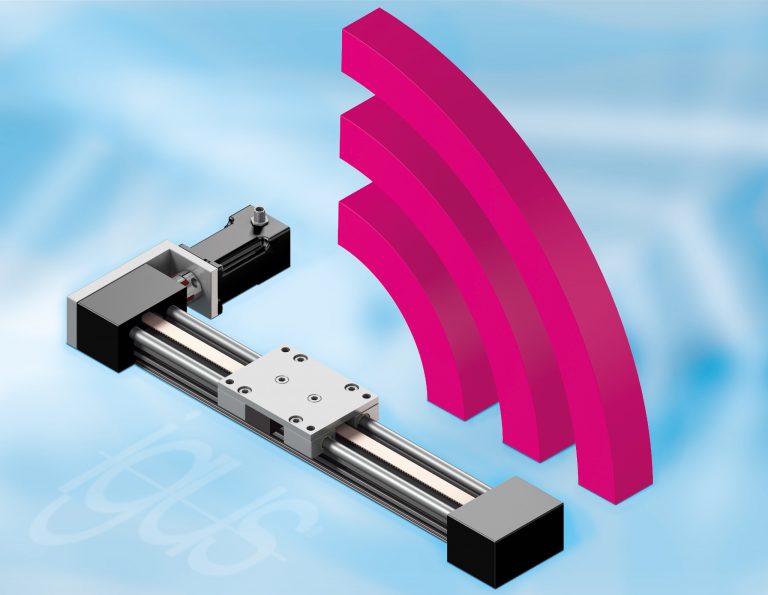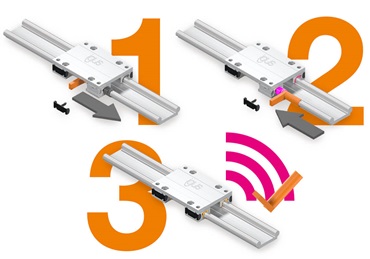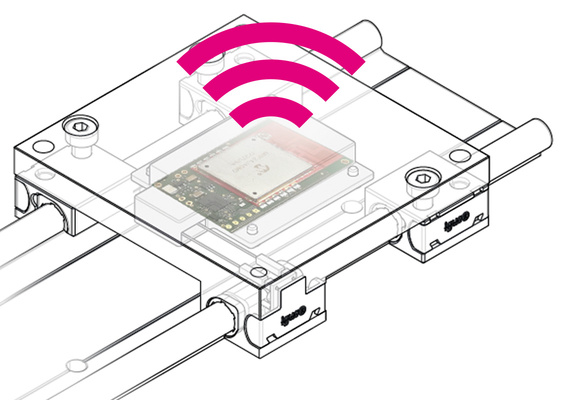Maintenance requirements recognised in advance with intelligent linear guides
Richard Habering | 15. April 2021
drylin linear guide systems have to withstand extreme conditions in continuous operation or even in abrasive environments. So that the the linear guides can slide without lubricant, igus relies on linear bearings made of high-performance polymers. But when should I change the bearing? The smart linear carriage from igus helps here. Intelligent sensors provide the maintenance technician with all information about the current maintenance requirements at the push of a button.

The question of the ideal changeover time is asked by many operators of systems that operate linear robots and linear systems around the clock. From packaging machines and the glass processing industry up to machine tools. In order to detect early wear of the sliding lubrication-free bearings made of high-performance polymers and to plan maintenance in advance, igus offers its drylin linear systems as smart systems. This technology measures the wear of dirt and dust-resistant bearings and gives the user a preventive signal when the wear limit is reached.
Bearings changed in seconds
Some time ago, igus developed a sophisticated replacement technology for a quick exchange of the bearings. This allows the liner to be replaced directly on the rail. The linear axis or the multiple-axis robot with toothed belt drive no longer has to be disassembled. A free tool from igus helps in dismantling the old bearing and installing the new one. Downtime and maintenance costs are reduced to a minimum. The system can be put back into operation within a few minutes and in many cases does not even need to be referenced.

Intelligent condition monitoring and integration into customer networks are also possible
To implement advanced Industry 4.0 applications, a measurement and data transmission unit is built into the carrier plate of the drylin carriage. This communicates with a central i.Cee:plus module via the industry-standard LoRa radio. In this way, any diverse integration into customer networks or further IoT concepts can take place. Of course, this can also be implemented locally using a standard CAT5 patch cable.
The 24V DC power supply of the integrated measuring unit is ensured by a LiPo battery, which can be easily charged via USB interface. This ensures round-the-clock condition monitoring of the profile guide. By connecting to the i.Cee:plus module further features such as predicted maintenance intervals, live dashboards (online and offline) or immediate alarm messages via e-mail or SMS can be implemented.

Predictive maintenance increases service life and machine availability
The purpose of condition monitoring through smart plastics technology is process optimisation and ultimately cost reduction. Safety, durability and the avoidance of downtime are the way to achieve this. The means to achieve all this is the best possible maintenance of the machinery. The principle of the i.Cee:plus module can best be described as “predictive maintenance”. As the sensors constantly measure the condition and immediately report any abnormalities, damage or malfunctions can be responded to at an early stage, i.e. before they occur and lead to costly downtime.
But it does not remain with mere warnings. The transmitted data also enables the rapid identification of the causes of probable defects. “smart plastics” stands for self-examination and at the same time for self-diagnosis. The customer acquires an additional level of security. However, signals do not only occur in the case of defects, but also regularly about the wear level, such as a plain bearing element in a drylin linear guide. If maintenance work was previously carried out quite arbitrarily according to rigid intervals, the individual remaining service life of the component and always the best maintenance date can now be determined. Particularly in the case of the long-lasting components made of tribo-polymers, the full utilisation of the life cycle pays off. The warning signal only occurs when certain values exceed or fall short. The maintenance process is automated and thus cheaper. Basically, maintenance, repair and replacement can always be done at the optimal moment. Predictive maintenance therefore brings everything down to a simple formula: downtime is reduced, service life is increased, and therefore machine efficiency is increased.

